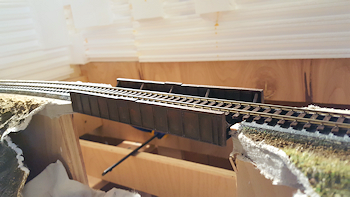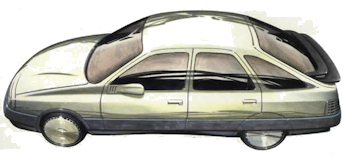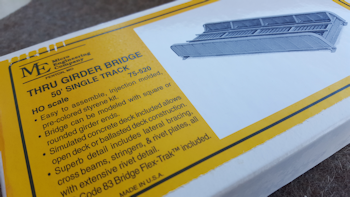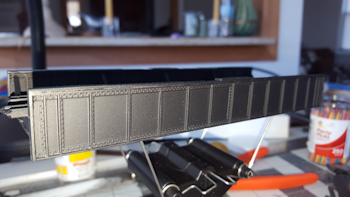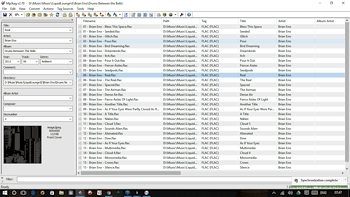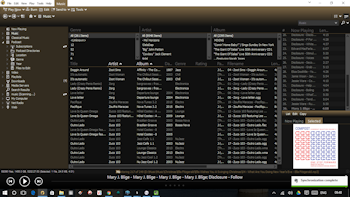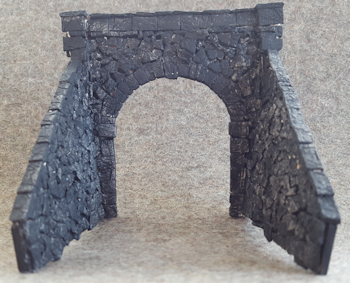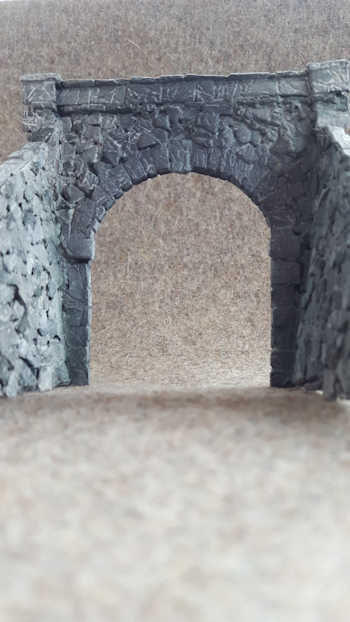A 70F/21C day in Manhattan in March was too good an opportunity to miss, so my fellow Bromptoneer, Steve, and I met up at NYPenn station and set off for a leisurely tour of the west side of the Big Apple.
The nice thing about riding a Brompton around the city is that there’s no real incentive to hammer around. Naturally we took every opportunity to study the view, talk about geology and history and that sort of stuff.
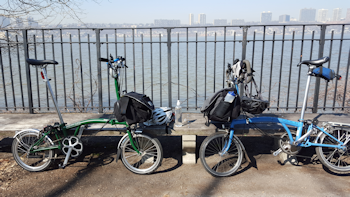
The Brompton brothers pause on the Greenway. It was a hazy day …
So it’s not all about the bike although Bromptons never fail to elicit comments from other cyclists and passers-by and, indeed, other Bromptoneers. A consequence of the number of options – colour combinations, equipment, customisations, etc – means you’re rarely going to come across your own bike’s doppelgänger.
After grabbing a quick sandwich at Pret a Manger, which while tasty enough is about as French as a British company with branches in an American train station can make a sandwich, we cut across the the west side Greenway cycle path through some fairly massive construction being developed over the Penn station yards. Until recently passengers were able to see daylight after emerging from the Hudson rail tunnels and before entering the Stygian gloom of NYPenn station.
Now there’s a huge building in the process of construction over the tracks with truly massive steelwork much of which looks riveted if not actually bolted together. Elements are being hoisted into place from a forest of cranes on the top.
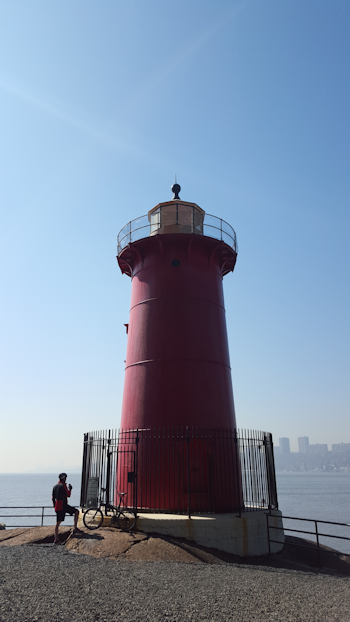
The Little Red Lighthouse at Jeffrey’s Hook – right under the GWB
Heading north our target was to be the
George Washington Bridge – GWB, possibly the busiest bridge in the world. The sun was really nice and warm, although the shadows where the path runs under the West Side highway kept the air there pretty chilly.
The light house under the GWB turns out to be a famous literary landmark. The Little Red Lighthouse is a book familiar to Americans, although honestly, I’d never heard of it.
When originally built on Jeffrey’s Point on the Hudson it shone a light of ten candlepower. Now there’s no real conversion between candlepower and lumens, but I can’t help thinking that 10 candle isn’t much, although I imagine nights on the Hudson were much darker then.
It was then time to bite the bullet and head further north to climb up the GWB.
I’ve descended the Greenway at this point on many occasions, but the ascent is really steep. My creaky winter knees eventually gave up on the final section. But heck! Walking up is still doing the work, right?
Access to the bridge’s cycle-path was typically cycle-pathy – ill-signposted, convoluted and really rather unpleasant. Having eventually found the ramp for the path we headed out onto the span. At this point the path is barely wide enough to accommodate two sets of handlebars so you can only hope that riders coming at you are as competent as you are.
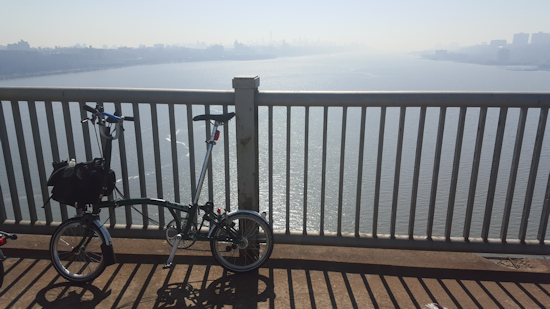
Brian pausing to admire the view. I can’t believe those railings are only that high …
The other issue is, and my apprenticeship was in shipbuilding so theoretically I know this, that bridge really moves around. I’m actually really confident on a mountain or cliff path, but when those built structures get shaking, I sweat a little.
But, hey ho! Off we go …
We actually made it into New Jersey, contemplated Chris Christie’s current headaches, sympathised – not really – and admired the prospect into the Garden State and found it wanting, tried to find a traffic cone then headed back towards NYC.
Getting back onto the Greenway turned out to be more problematic than we anticipated. There’s a lot of work going on there, which is admirable, but it’s very poorly signposted and we had a couple of useless detours before getting back down to river level.
A nice cup of tea in Central Park beckoned so we cut across and eventually settled on the Tavern on the Green, but of course the coffee shop was closed but we settled for a beer with an old friend of Steve’s who happened to be an archbishop. Okay, so I’m not really sure about that, but who knows?
Now I delved deep into the pockets of my fixie rider’s jeans and dug out a couple a couple of unused “The Standard” beer tickets. They were green.
So we headed south another sixty or so blocks in the hope it was a green ticket day. And it was! And the nice young woman behind the bar took the tickets and we got another beer. Phew!
All right, maybe every day is a green ticket at “The Standard“, but the beer was good.
Time for the train.
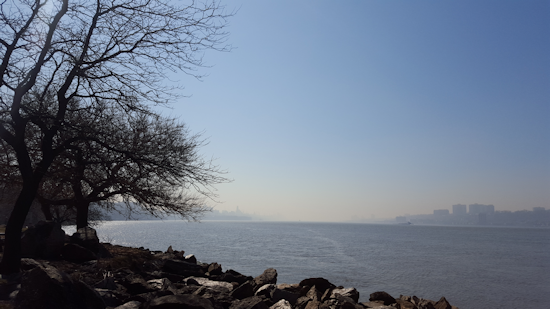
The Hudson – looking south from Jeffrey’s Point




